Description
Indigo (Indigofera tinctoria) Indigo(E)
Paints: shades of blue
Grand complexion
fairing dye
Indigo has been used for thousands of years to dye various fibers in the most beautiful shades of blue. In the past, woad (Isatis tinctoria) was grown in the Netherlands to make blue dye, but in the 16th century the woad was supplanted by indigo from the Dutch East Indies and other Asian countries.
The indigo dye is extracted from the fresh indigo leaves and the resulting indigo cake is processed into powder and used to make the paint vats.
Indigo is a substantive dye, which means that you do not have to pre-stain.
Indigo does not dissolve in water. In order to be able to paint with it, the oxygen will have to be removed from it, also known as 'reduction'.
You do this by making the dye bath basic with calcium hydroxide and reducing it with fructose. The indigo then dissolves and can adhere to the fibers.
Dyeing with Indigo is magical. Due to the reduction, the blue color disappears as soon as your fibers are in the dye bath. When you take them out and oxygen is added, the oxidation process begins. Before your eyes you see the color slowly change from green to beautiful shades of blue.
Facts
Indigo…
… is sometimes seen as the 'King' among dyes.
This is one of the natural dye products described in the book Eco-dye by Anja Schrik.
(To prevent leaks, we pack powder substances in plastic).

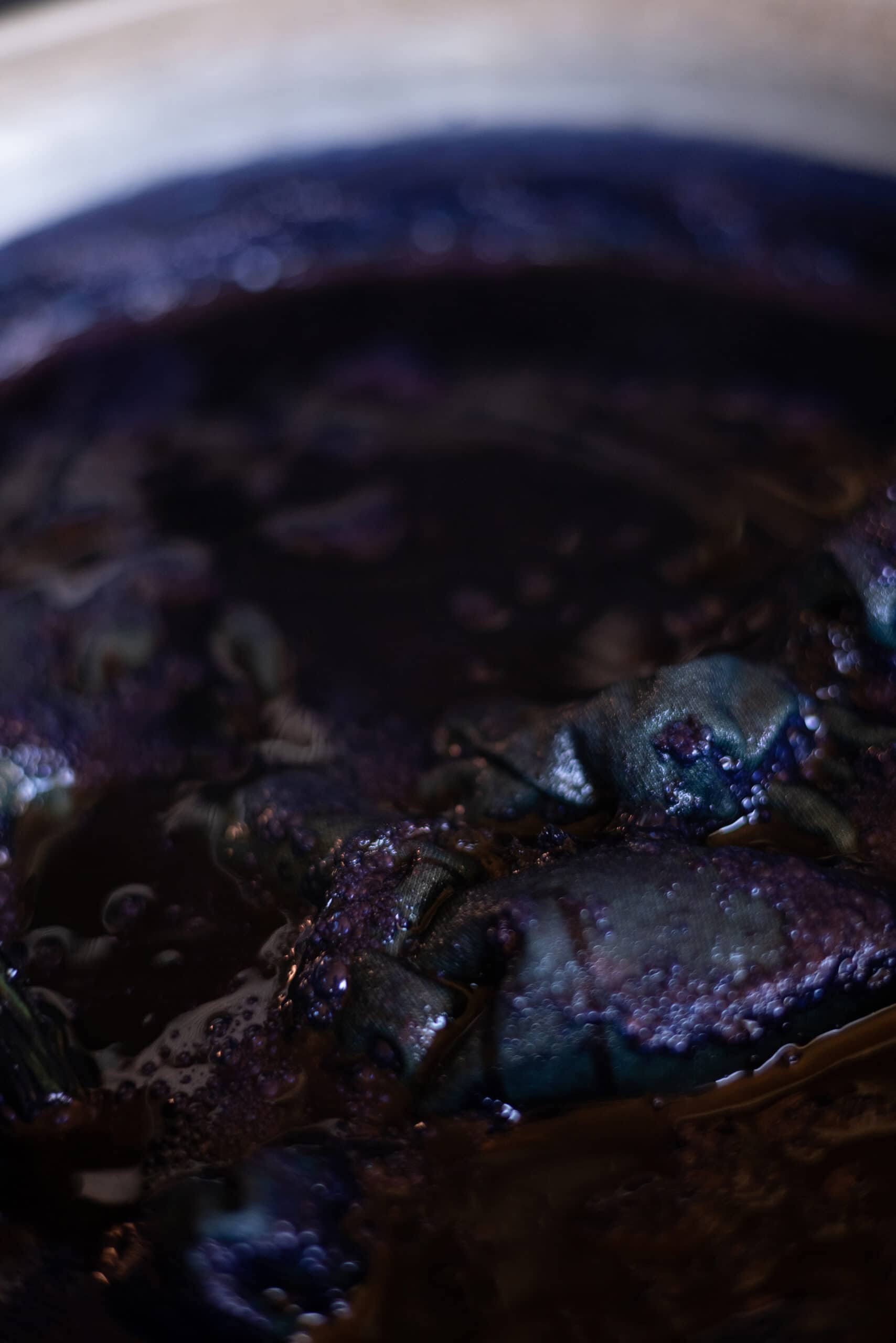
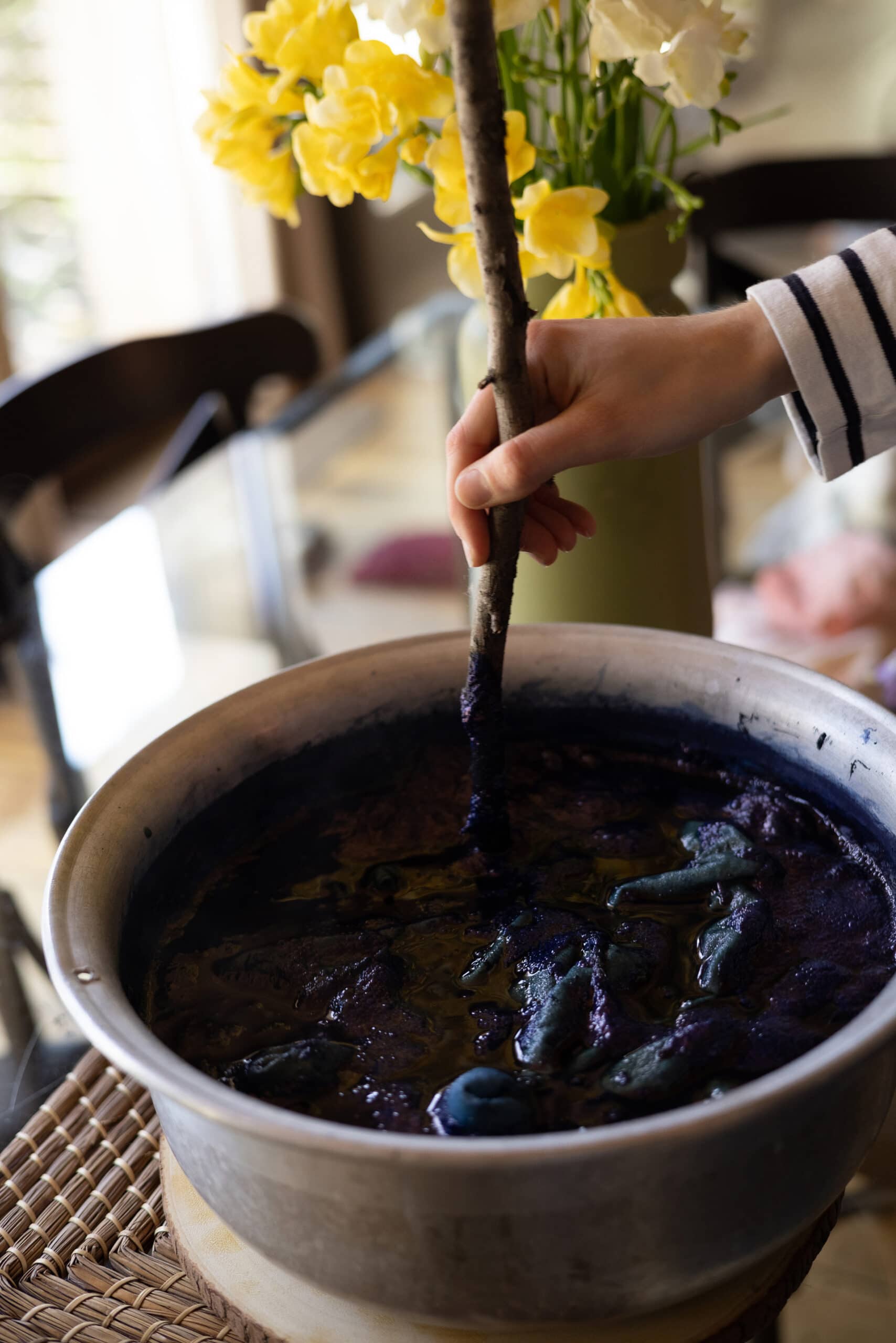
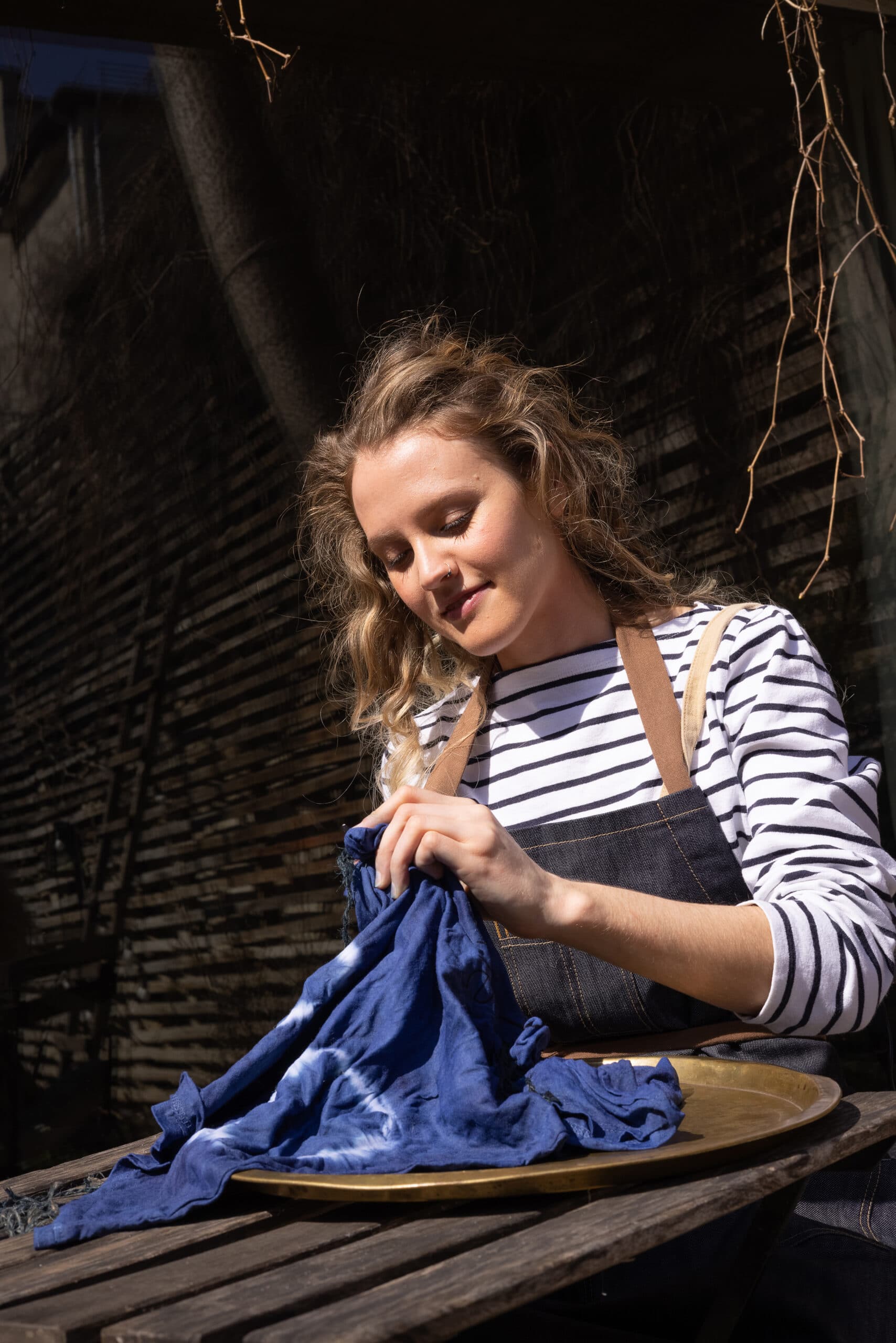
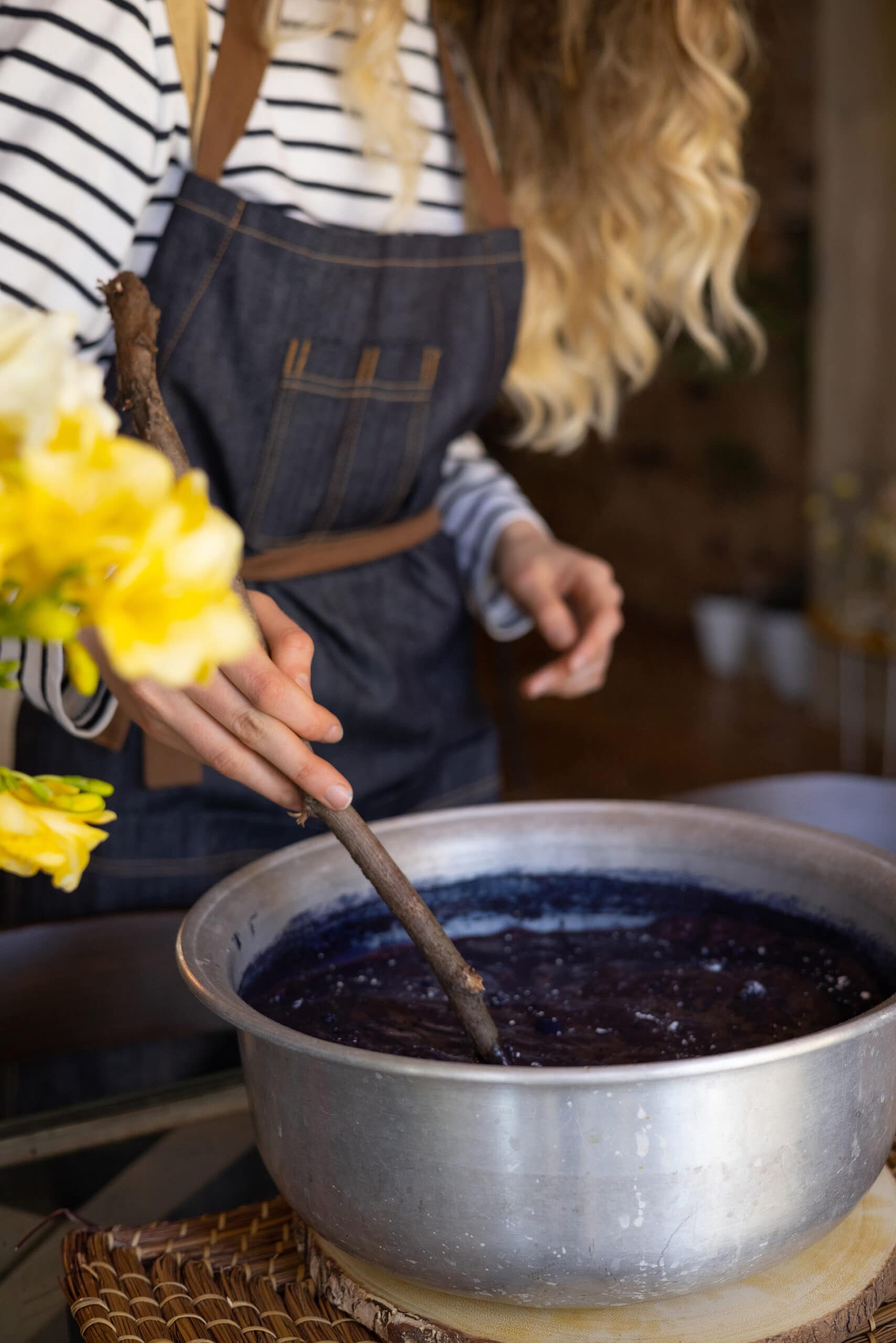
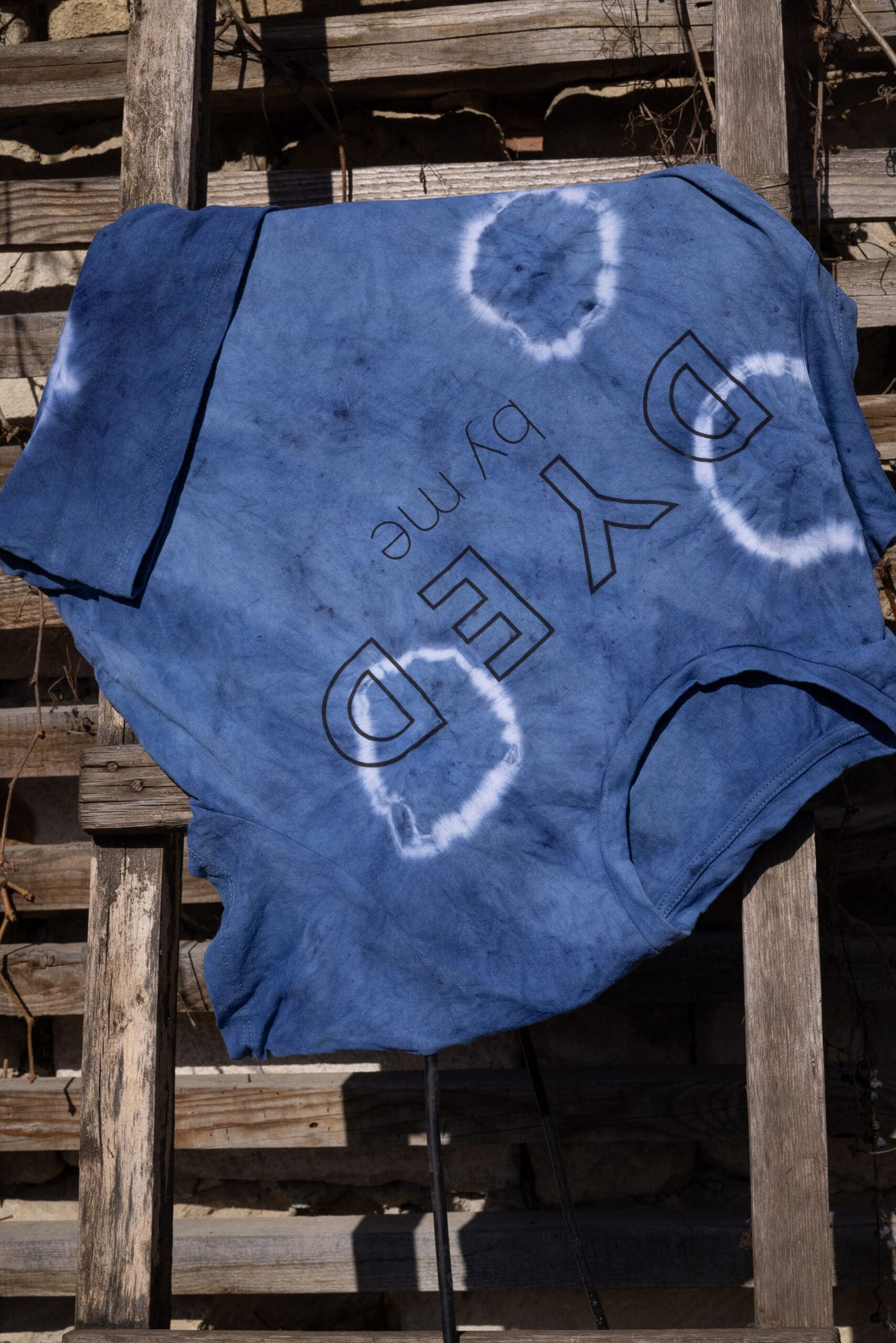
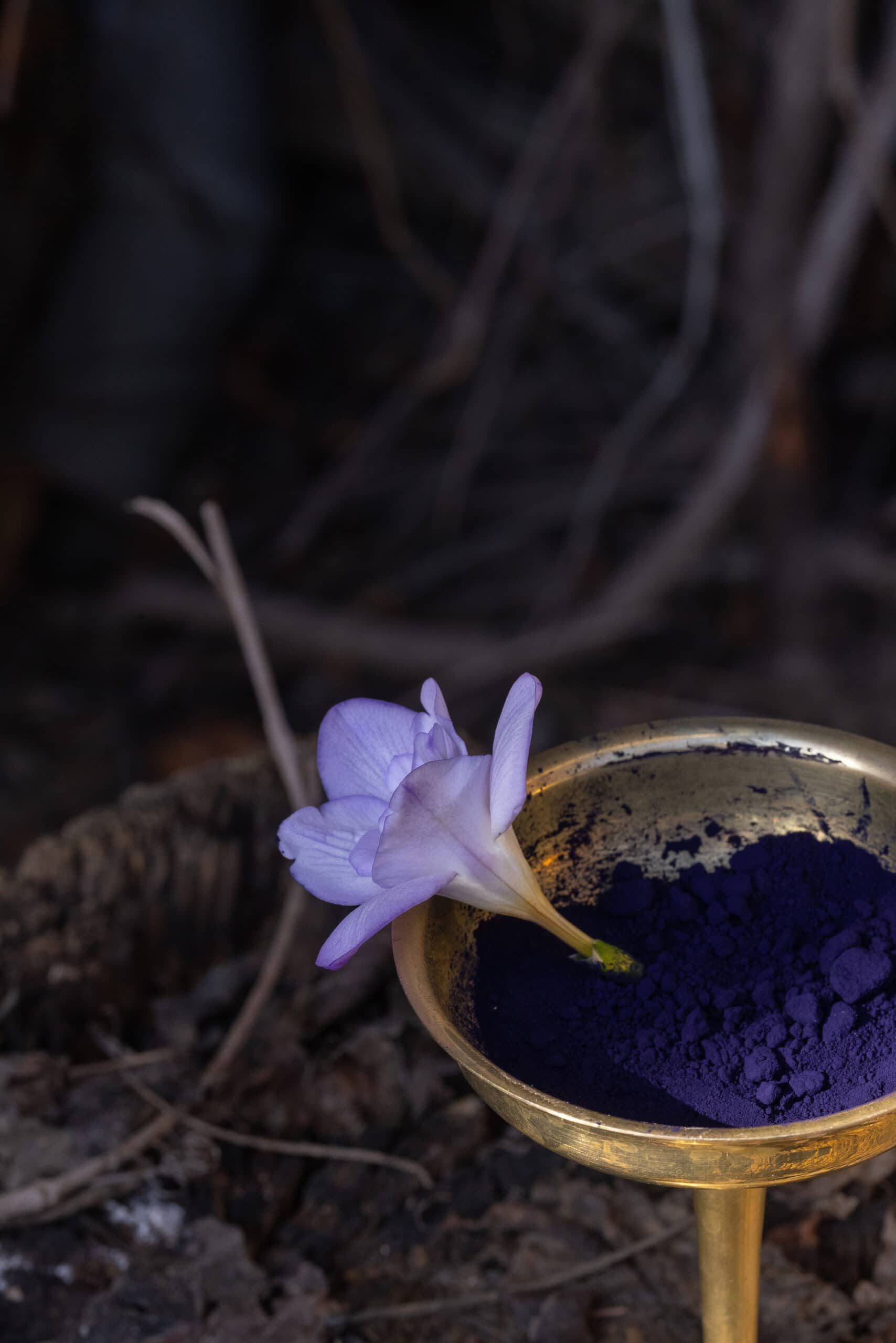
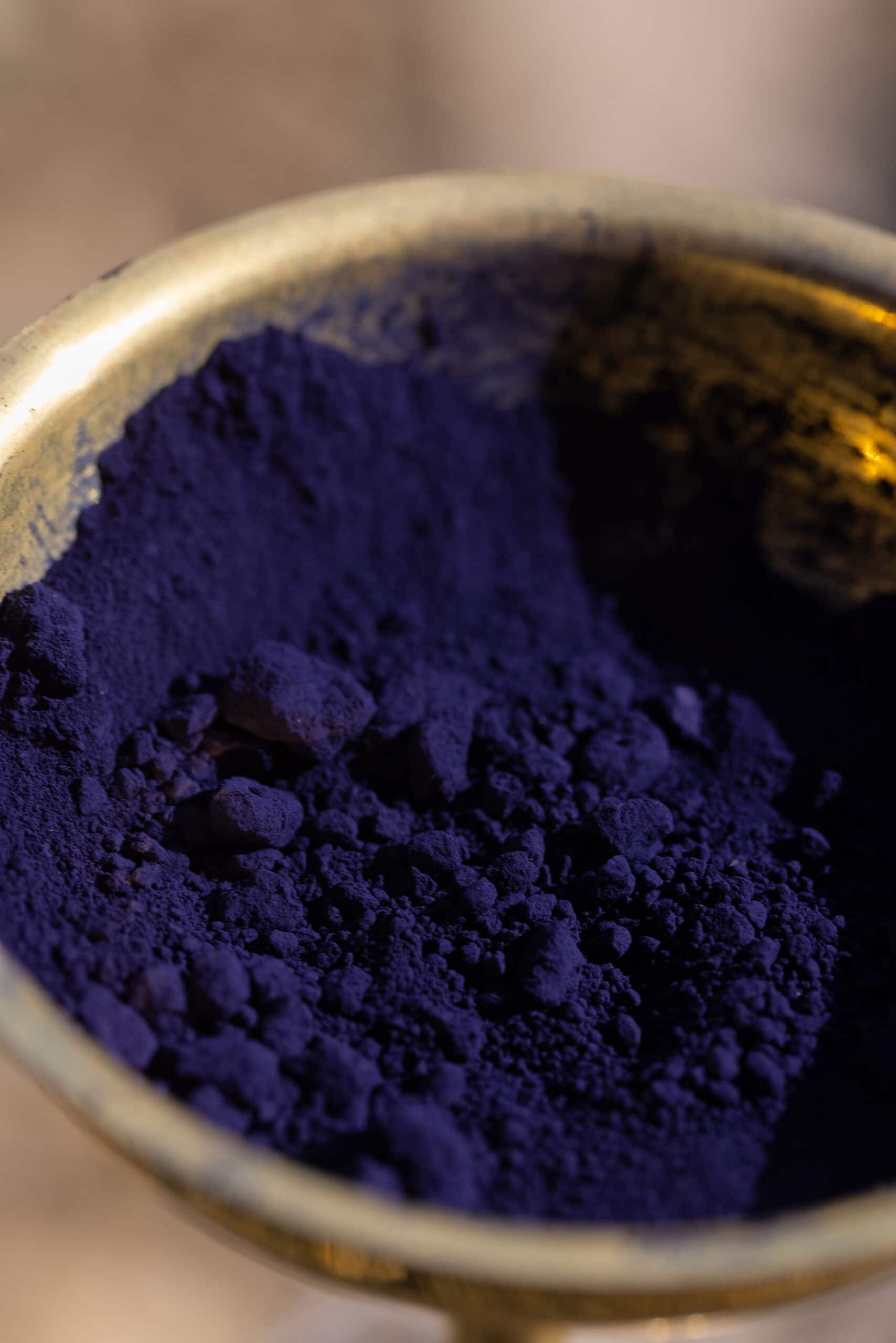
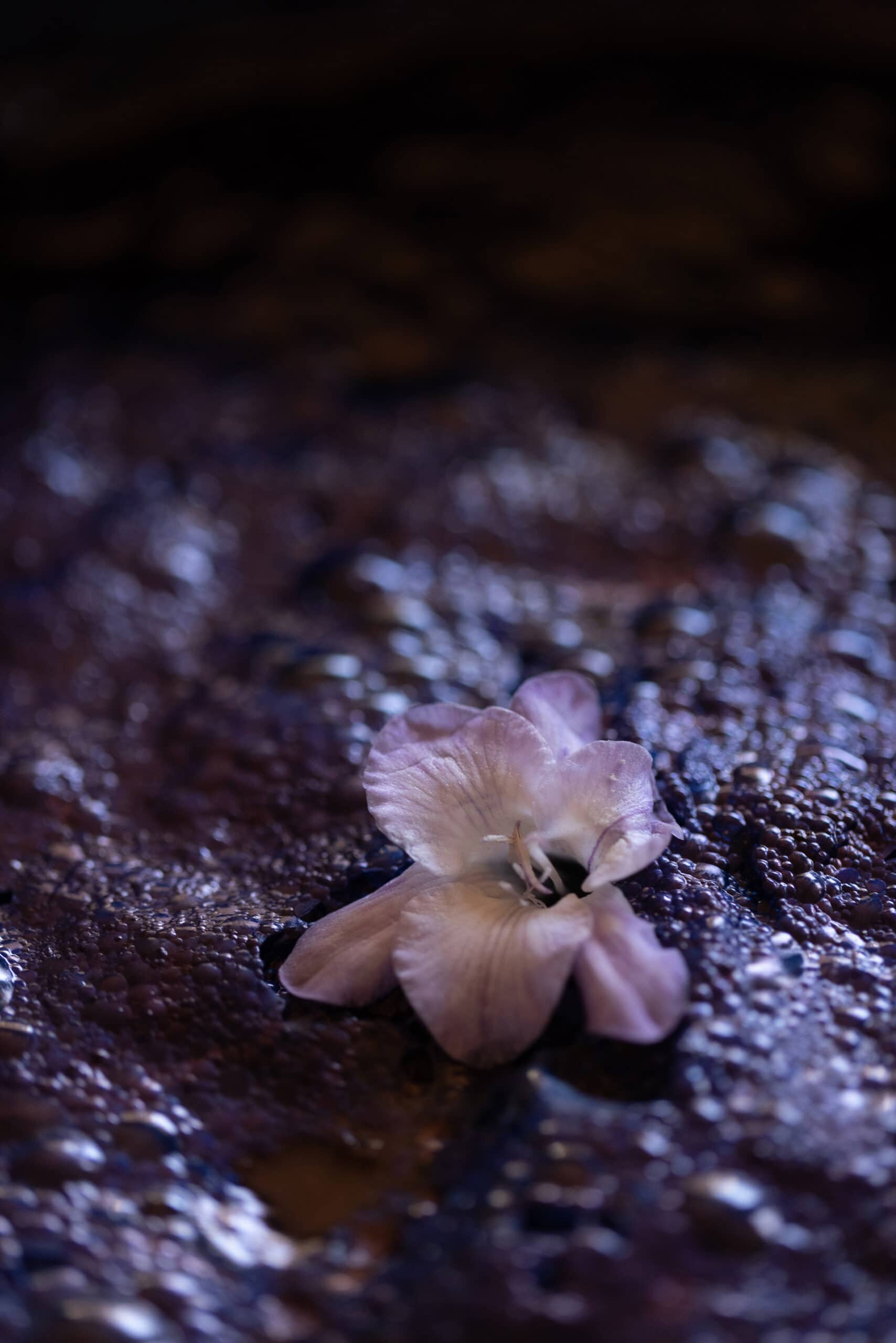
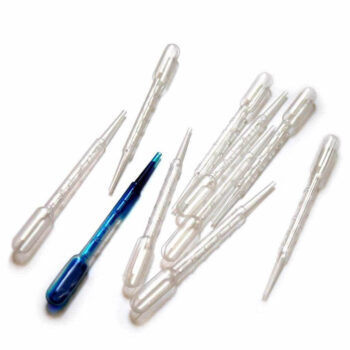
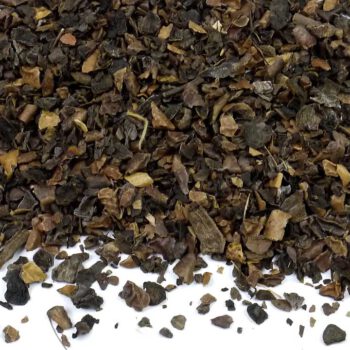


Reviews
There are no reviews yet.